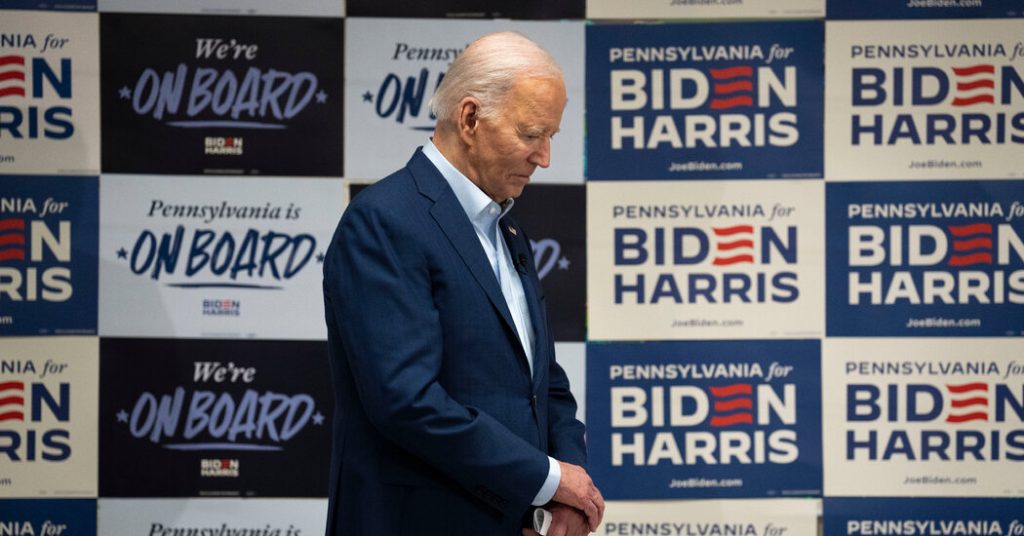Think of it as a rare instance of cross-aisle consensus or else a sartorial trend gone badly wrong. But it did not go unnoticed when, in a photograph from the Oval Office posted to President Joe Biden’s account this week, Speaker of the House Kevin McCarthy, Senator Mitch McConnell and Representative Hakeem Jeffries were all captured wearing some variant of the dreaded footwear hybrid: the sneaker shoe.
Weighing in on Twitter, cult men’s wear commentator Derek Guy (@dieworkwear) called out the footgear as a clear lapse in dignity, if not actual protocol. Why pay a visit to a sitting president dressed in shoes designed for power-walking at the mall?
“Awful,” Yang-Yi Goh, style director of GQ, pronounced the shoe that has become a style default among Capitol Hill staffers.
Yeezy on the sole and granddad on the uppers, the Cole Haan shoes (Mr. McConnell, for the record, was wearing the label’s ZeroGrand; Mr. McCarthy, the Osborn; and Mr. Jeffries, the Grand Crosscourt II) have neither the street cred nor the advantages of actual sneakers, like the Nike Dunk Low “Montreal Bagel” model that stoked debate when the “Ted Lasso’’ star Jason Sudeikis and his castmates wore them to the Oval Office in March — there to discuss mental health care in the United States.
“Call me old fashioned but no man should set foot in the Oval Office without dress shoes and especially not sneakers,” the political commentator Saagar Enjeti said at the time, unleashing further invective in a Twitter post: “4 guys. No ties, 3 pairs of sneakers in the Oval Office. This country is going to hell.”
But is wearing a squishy shoe that masquerades as a hard-soled one really all that terrible? “The hybrid is the worst possible choice,” said Mr. Goh of GQ, the footwear version of political bait-and-switch, akin to a novelty tie or a garish pocket square. It does not help matters much when, as in the cases of Mr. McCarthy and Mr. Jeffries, the soles of your shoes are glaring operating-room white and the accompanying socks are striped.
“You’re trying to pass this tech-y monstrosity off as a proper dress shoe,’’ Mr. Goh said, adding that a suit and necktie worn with a traditional hard-soled shoe symbolize respect for occasion, in this case a meeting with the most powerful man on earth.
For Jim Moore, the creative director of GQ and the stylist largely responsible for Roger Federer’s impeccable swagger, a hard-soled shoe serves as a “sign of courtesy and good manners” in most formal settings. A solid pair of lace-ups — many of which, it’s worth pointing out, are manufactured nowadays with comfortable rubber soles — provides the foundation for a suited wearer. “When you see a guy strutting through the city in a suit and your eye reaches the sneaker, the whole look collapses,” Mr. Moore said.
Like the stretchy mid-blue suits favored by many men, including Mr. McCarthy, the optics of the “dress sneaker” would seem to have the opposite of the desired effect. Rather than imparting to their wearer a vigorous, youthful look — as President John F. Kennedy’s forelock once did — they appear strenuous, over-considered, the more passé because young consumers have turned increasingly toward the foolproof formulas of classical tailoring.
“It’s literally putting your best foot forward,” Mr. Goh said of a pair of well-buffed Oxfords — or even the loafers that were once thought too schlumpy to be worn in business settings. The implicit formality of a hard-soled shoe evinces respect for the formality of an occasion destined to occur a limited number of times in any given life.
“Do one or the other,” Mr. Goh added. “Just commit.”



